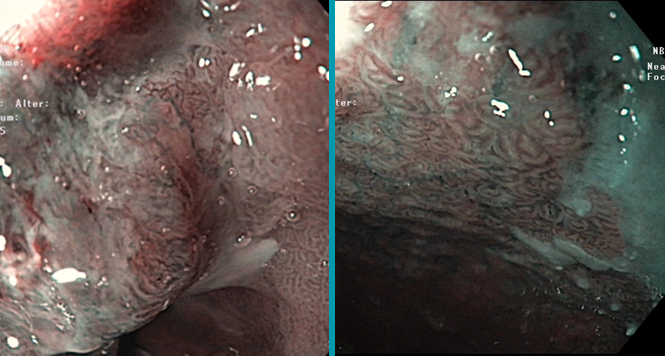Postendoscopy Barrett’s Neoplasia Rates Are Low
Prateek Sharma, MD, FASGE, reviewing Nguyen TH, et al. Clin Gastroenterol Hepatol 2021 Apr 8.
The majority of neoplasia (high-grade dysplasia [HGD] and/or esophageal adenocarcinoma [EAC]) in patients with Barrett’s esophagus (BE) is detected at the initial endoscopy, ie, prevalent neoplasia. Some studies have reported that up to 19% of all BE neoplasia (HGD or EAC) are detected within 1 year of the initial negative endoscopy, ie, postendoscopy BE neoplasia (PEBN). In this retrospective analysis of a veteran cohort, the authors evaluated the prevalence of dysplasia and neoplasia 3 to 18 months (“missed”) after an initial diagnosis of nondysplastic BE (NDBE).
The analysis included 402 patients with NDBE who underwent follow-up endoscopy 3 to 60 months after the initial endoscopy. Of these patients, 271 (67%; 95% males; mean age, 60.8 years) had a follow-up endoscopy 3 to 18 months later and 131 (33%; 95.4% males; mean age, 60.6 years) had follow-up endoscopy 19 to 60 months after the initial endoscopy. Among the patients who had follow-up endoscopy 3 to 18 months later, 38 (14%) progressed to indefinite dysplasia, 9 (3%) to low-grade dysplasia (LGD), 3 (1%) to HGD, and none to EAC. In the patients who had a follow-up endoscopy 19 to 60 months later, 18 (14%) progressed to indefinite dysplasia, 8 (6%) to LGD, 3 (2%) to HGD, and 1 (0.8%) to EAC. A BE length of ≥3 cm was associated with a significantly higher risk of missed dysplasia (odds ratio, 3.39; 95% confidence interval, 1.63-7.08). The authors also noted that the proportion of patients who progressed to definite dysplasia (LGD or HGD) increased significantly over time: 2.7% (3-12 months), 6.7% (13-24 months), 8.6% (25-36 months), and 12.9% (36-60 months) (P=.002).

COMMENTIn this study, only 1% of the BE patients had neoplasia detected within 18 months of the index examination. This study highlights that the rate of PEBN detected after an initial negative endoscopy is low. Careful examination and performance of biopsies at the initial endoscopy are critical to keeping PEBN low and need to be continued.
Note to readers: At the time we reviewed this paper, its publisher noted that it was not in final form and that subsequent changes might be made.
CITATION(S)
Nguyen TH, Thrift AP, George R, Rosen DG, El-Serag HB, Ketwaroo GA. Prevalence and predictors of missed dysplasia on index Barrett’s esophagus diagnosing endoscopy in a veteran population. Clin Gastroenterol Hepatol 2021 Apr 8. (Epub ahead of print) (https://doi.org/10.1016/j.cgh.2021.04.008)

